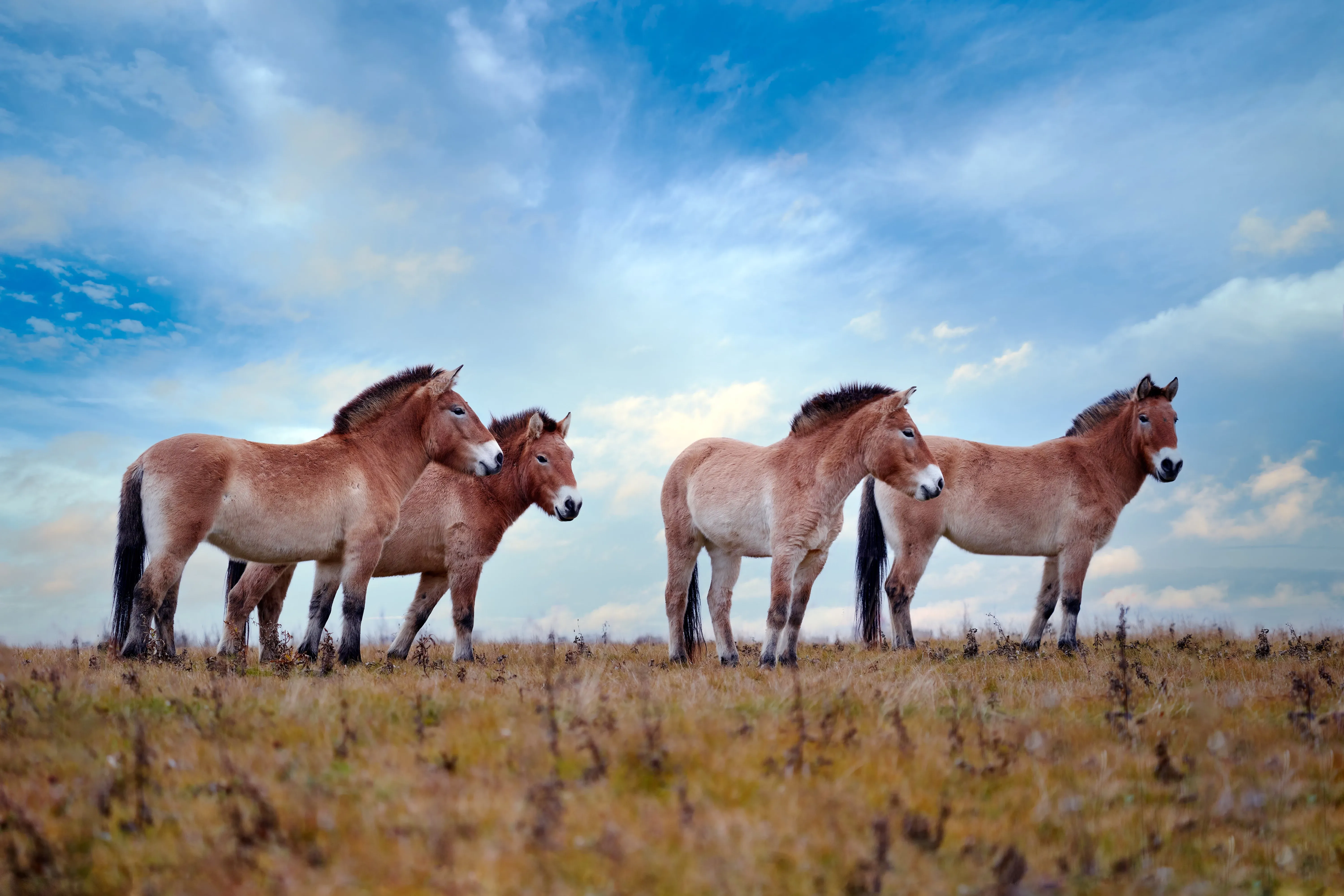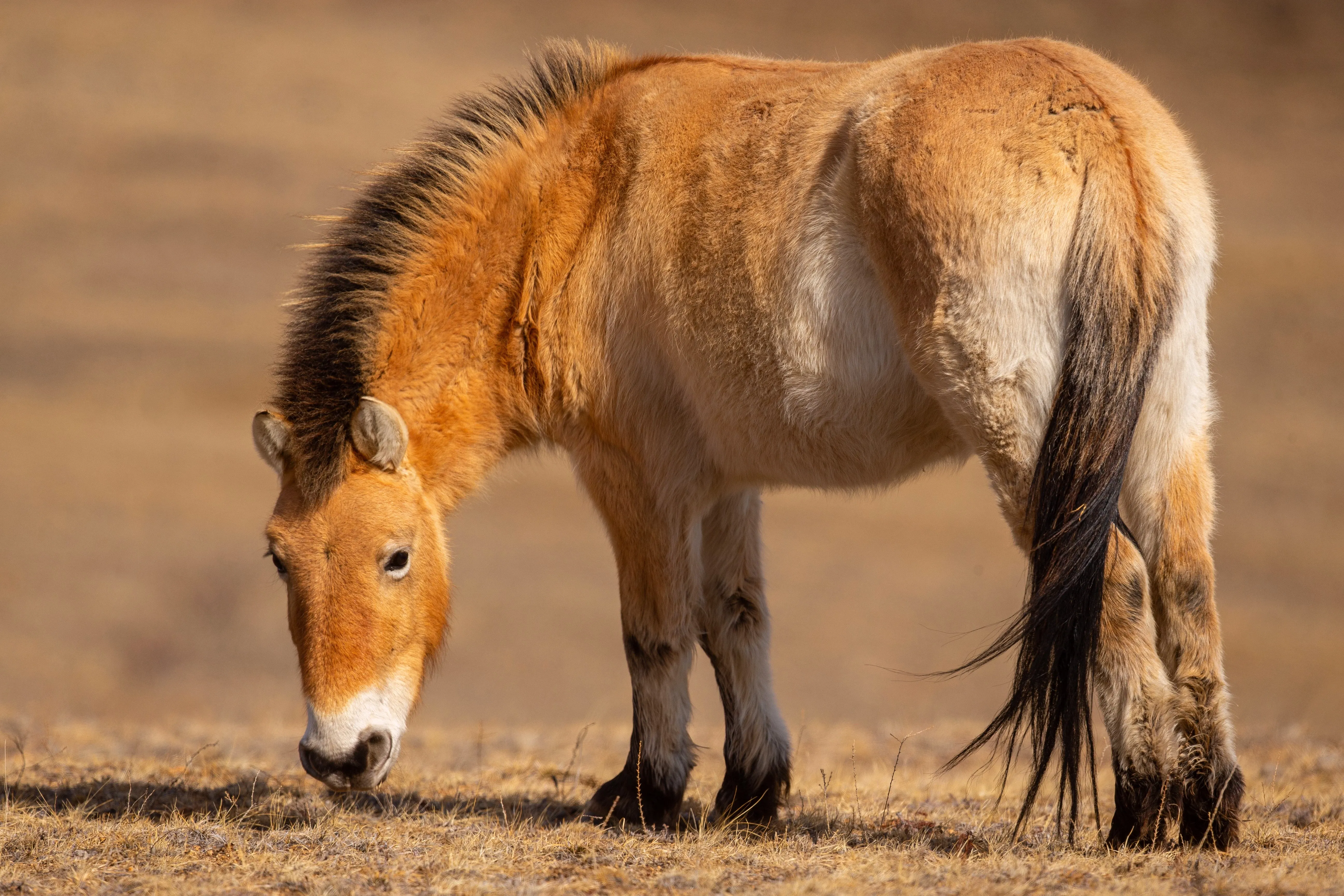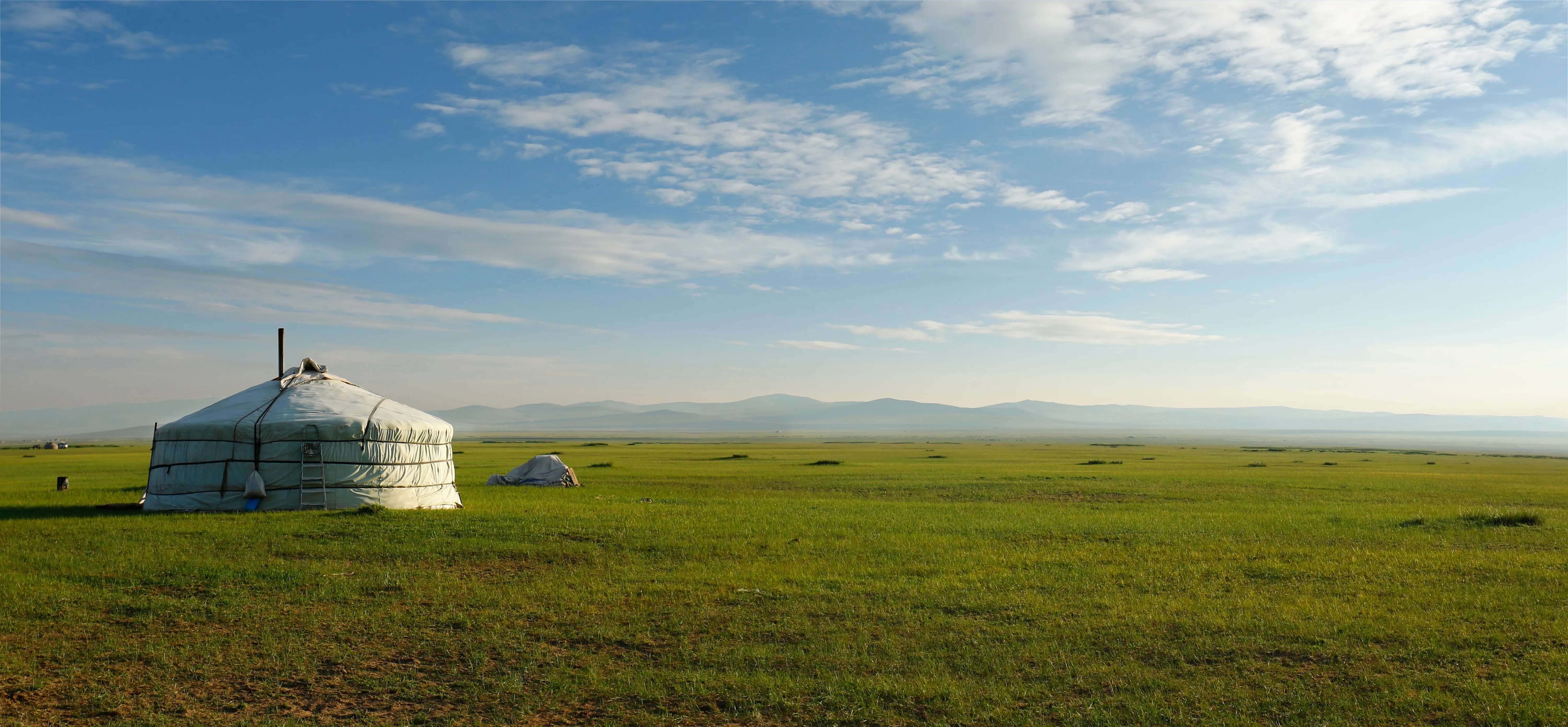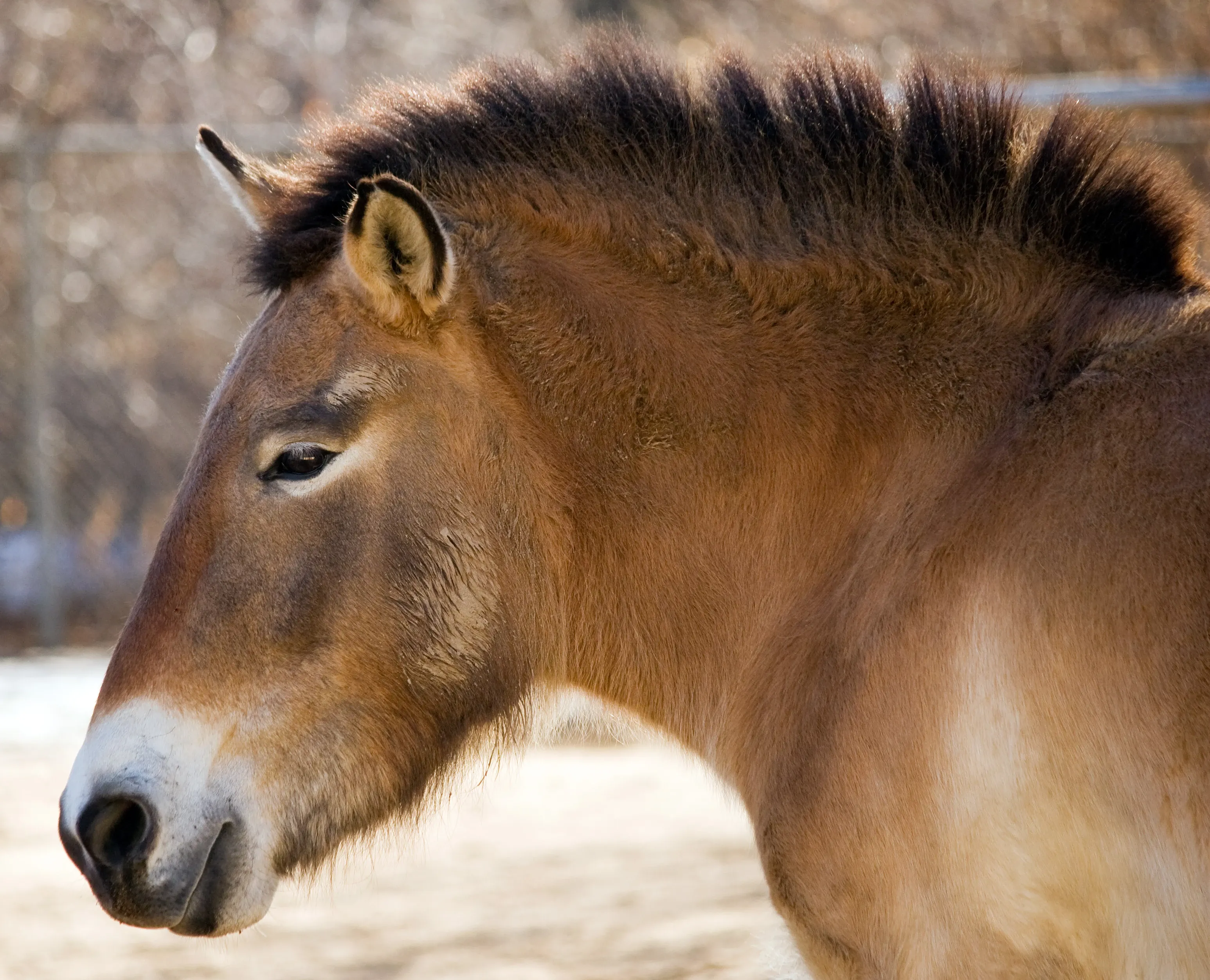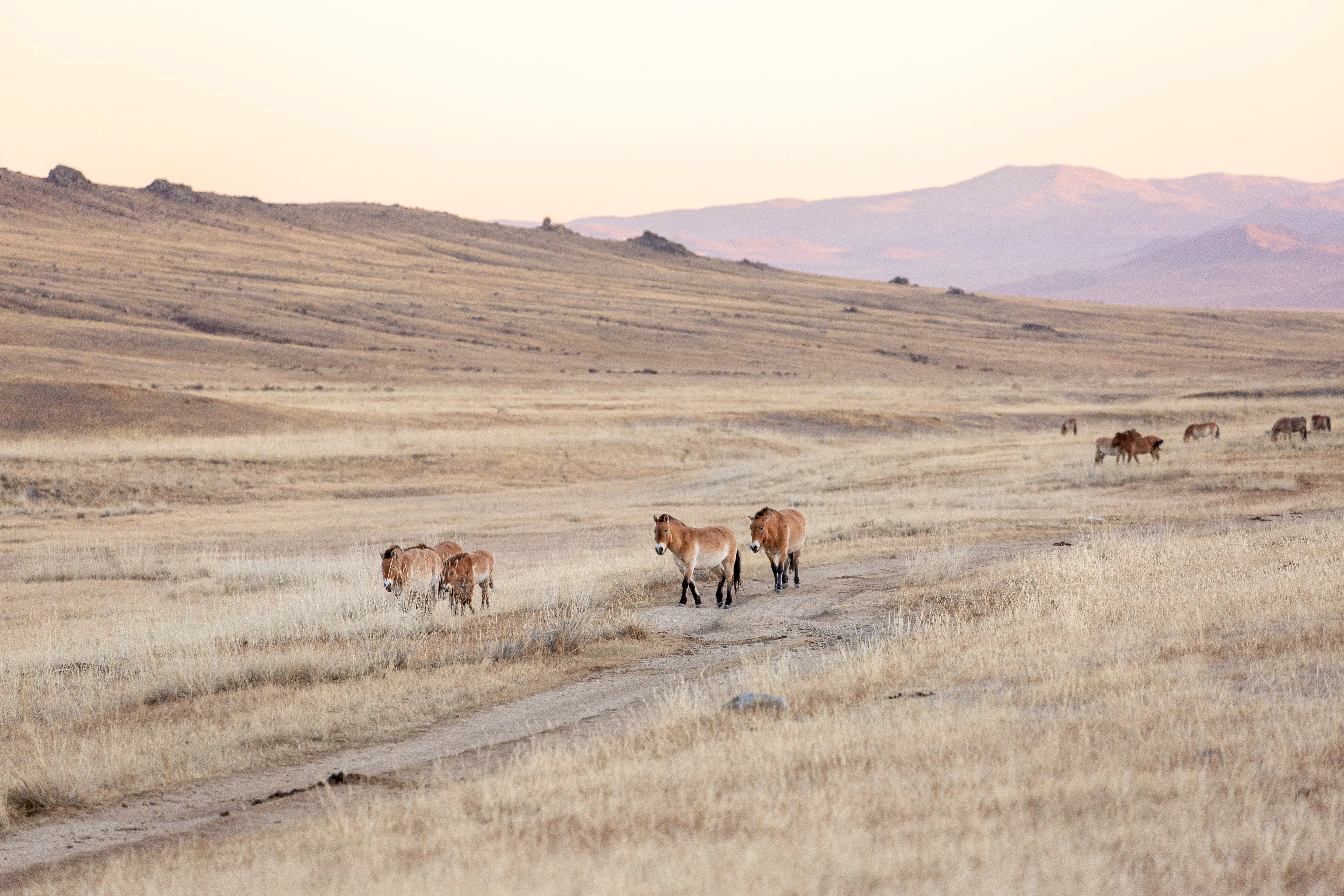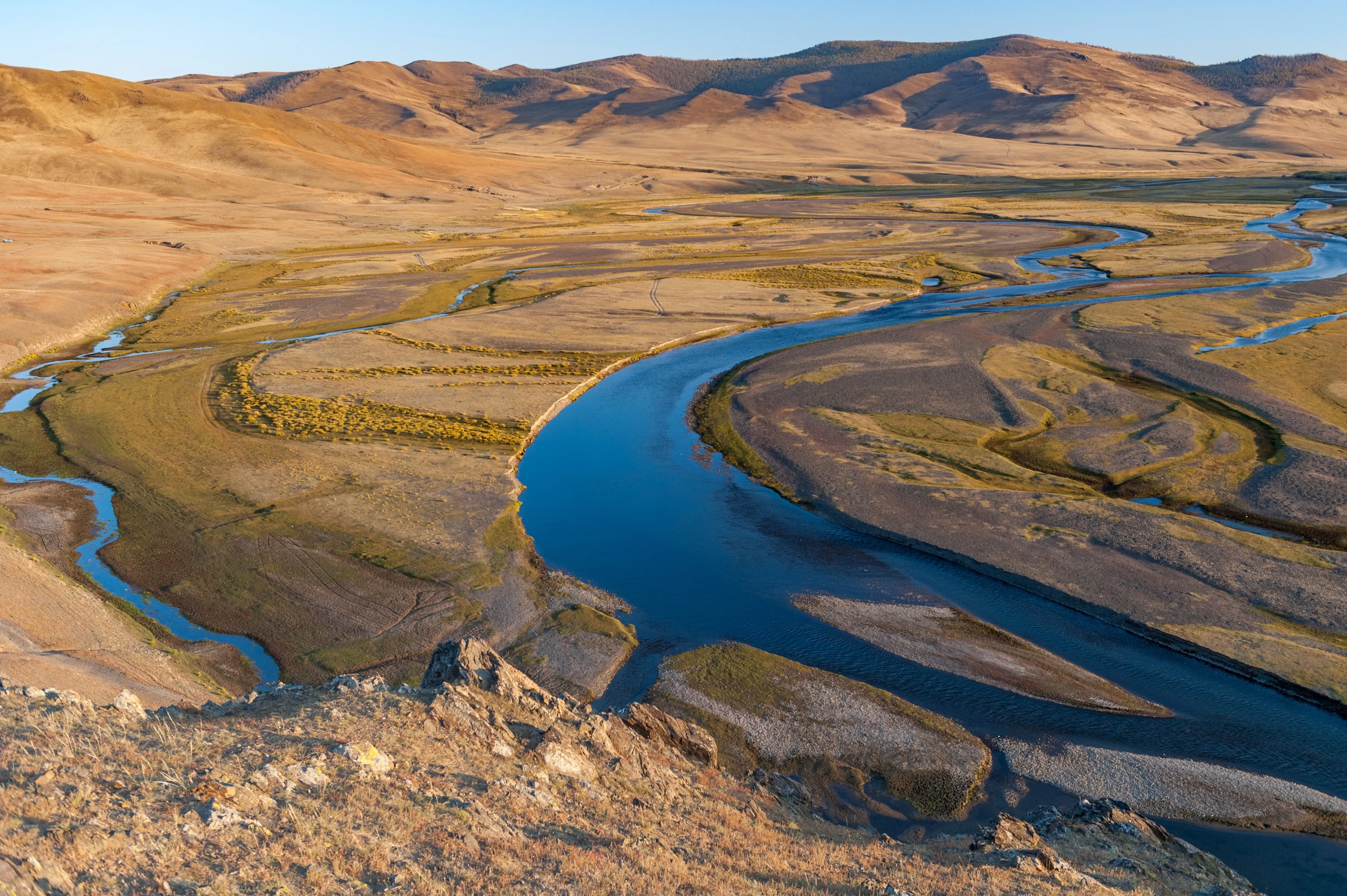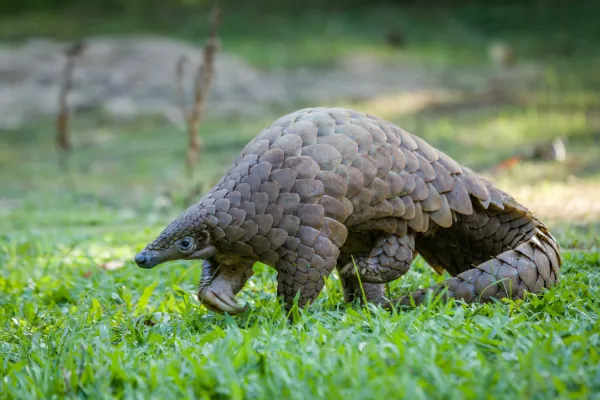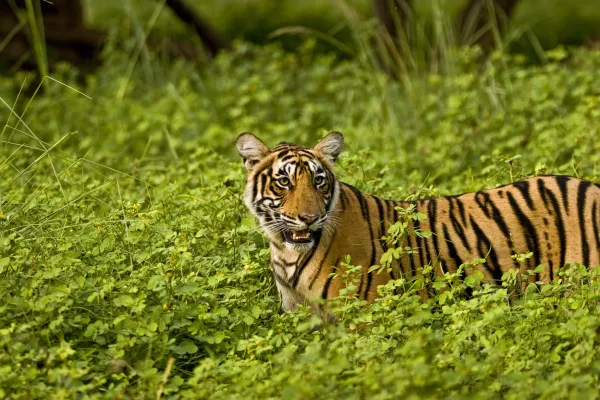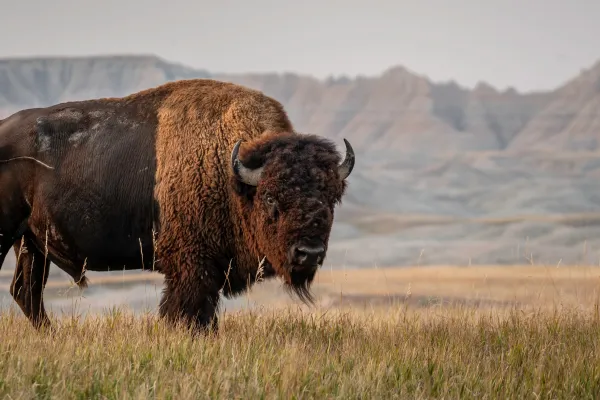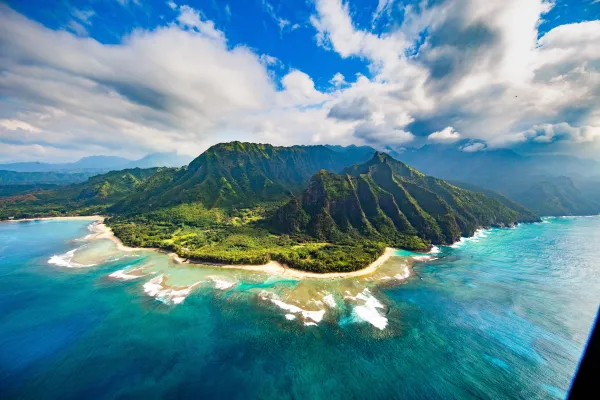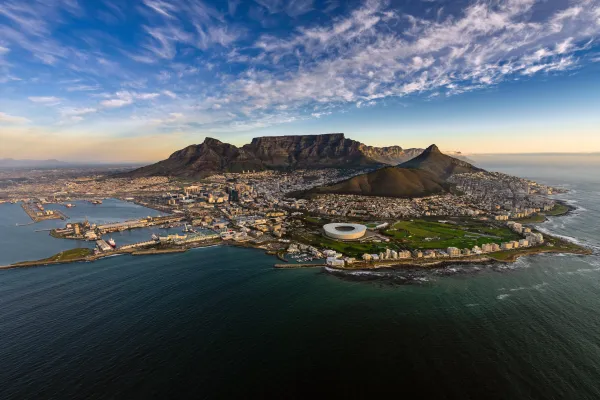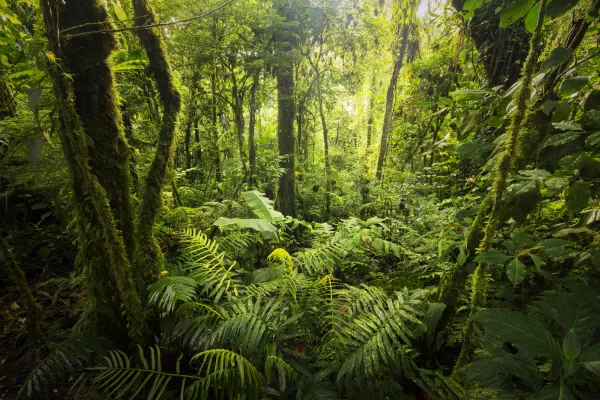Wild horses in Mongolia: Przewalski's horses
The Przewalski's horses were categorised as extinct in the wild until 1996. In 2006 the categorisation was changed to critically endangered. In 2011 the categorisation was changed once more to endangered. The "Khomyn Talyn Takhi" NGO is working hard to continue this trend. Next step: getting them considered vulnerable.
Przewalski's horses: Once extinct in free-range
Przewalski's horses could only be found in zoos for a long time. Wild Prezwalski's horses no longer existed. But even under the care of humans, the Prezwalski's horses would also have become almost extinct in zoos spread worldwide. The relatively small populations in zoos had low genetic diversity. Thus, inbreeding became a significant concern. By 1975, only 40% of mares living in captivity had given birth to foals. The mortality rate of foals was also increasing.
Khomyn Tal: The perfect place for reintroduction
Khomyn Tal in Mongolia is relatively far away from humans and thus largely untouched. This makes Khomyn Tal a unique ecosystem filled with wildlife and untamed nature. In the east of Khomyn Tal flows the Zavkhan River. The Mongolian sand dunes border the north. The Khar-Us lake in North-West migrates the climate and is an essential water source for many species.
Facts about the Khomyn Tal
- The area extends over 2,500 km².
- It consists predominantly of desert-steppe and arid-steppe ecosystems
- The average elevation is 1250 m above sea level.
- So far, Khomyn Tal has been identified as a habitat for 47 different mammals, of which seven are on the Mongolian Red List.
Although the land is sparsely vegetated with meager plants, the flora of this place is incredibly rich in nutrients. As fruit-bearing bushes spread and protein-rich grasses grow, so does the population of animals that feed on them.
The reintroduction programme for Przewalski's horses
1993 Dr Claudia Feh, Founder of the reintroduction programme for Przewalski's horses in Khomyn Tal, set a goal. She wanted to introduce a herd of Przewalski's horses in France. Reintroducing them to Mongolia was not possible at that time.
A highland mountain area was selected to work towards creating a herd of several dozen horses in the wild. In the next step, Dr Claudia Feh and her team went to Mongolia to search for well-protected places with fixed natural boundaries. Khomyn Tal met these requirements perfectly.
Preparation: Breeding of the future wild horse
In the run-up to the reintroduction, the French scientists bred the appropriate animals. For this purpose, 11 Prezwalski's horses were selected from different European zoos. These 11 horses were divided into four herds and bred for ten years. After ten years, the horse herd had reached a size of 55 animals.
»Przewalski's horses embody the resilience of nature, reminding us of the importance of conservation efforts.«
2004 - The year where it happened
2004, the first transport got organised. After intermediate stops, the plane, with 12 Prezwalski's horses as passengers, landed in an open, wild area of Khomyn Tal. After their long, exhausting journey, the first horses put their hooves on home soil.
On the first day, they were still tired and did not get far. But after only a short time, they had acclimatised. Ten more horses started their journey from France towards Khomyn Tal in 2005. In 2011 also four horses from a Czech zoo joined.
Speculation with a lucky hit
In France, individual horses were selected for release in Mongolia based on the following facts, among others: Genetics, behaviour, and characteristics. What was not done, however, was to separate or isolate the four herds in Mongolia.
On the contrary, Dr Claudia Feh and her team have concentrated on keeping the herds close together. They speculated that this would help the herds and protect them from, for example, wolf attacks. This turned out to be the right decision.
Why France, though?
The attentive reader is probably wondering how the seemingly coincidental cooperation between Mongolia and France for reintroducing Prezwalski's horses came along. However, this connection is not entirely so coincidental. The Przewalski's horses can be found on historical wall paintings in the south of France. The colours. The physique. The mane. These drawings are unmistakably Prezwalski's horses. Proof that Prezwalski's horses were once native to Europe - especially France. However, this habitat belongs to history. But the attachment of the French to the wild horses remains.
Przewalski's horses now
Back in free range, the foal survival rate has increased to 74.4%. This is despite the fact that the herd in Khomyn Tal is still relatively small. Experts consider it remarkable that 3 out of 4 foals are healthy.
The population continues to grow. The current population is 89 animals. But the project is not yet finished, and the efforts to keep the breed in the wild continue.
Challenges the future holds
- Water (when the lake freezes over)
- Hybridisation of domestic horses
- Transmission of diseases
There were and still are many challenges. But the international team of people who dedicate their lives to the Przewalski horse have already done great work.
The importance of local people
The participation of local people is of great importance to achieve a wild horse population big enough to live independently. That is why one focus of the "Khomyn Talyn Takhi" NGO is the improvement of the livelihoods of the local people without endangering the Prezwalski's horses.
The products locals produce are now entering the market where the Przewalski's horses come from - France. In addition, income through tourism is generated. Small businesses focusing on milk dairy products and wool were established.
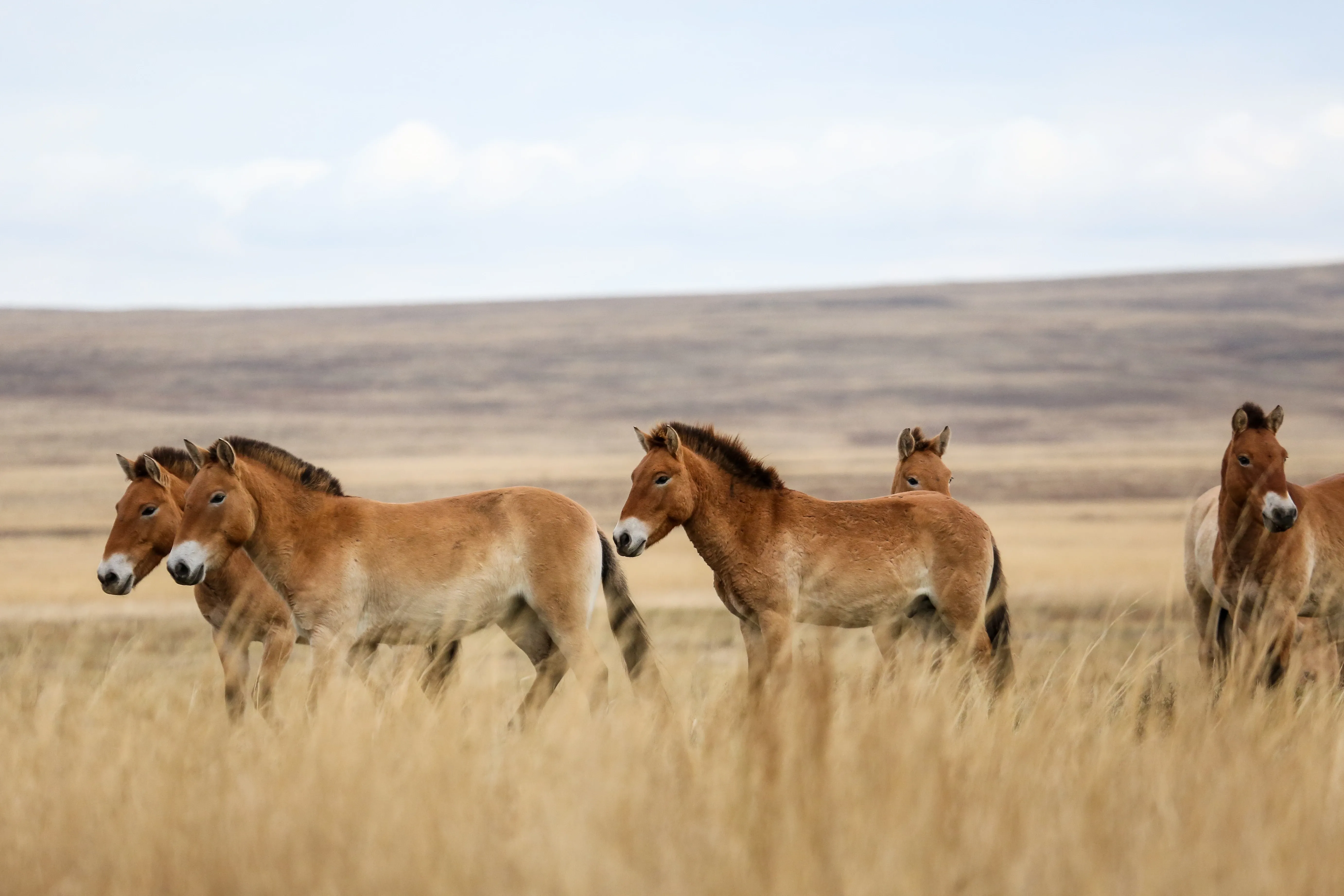
The future of Prezwalski's horses
The short-term goal is a population of 500 wild horses that can survive independently in the wild. The long-term goal is a population of 1,500 animals, as this population size is considered significant enough, so further growth should be possible without human support. This goal is getting closer every year.
The annual growth rate of the population is 20 %. The survival rate of free-ranging Prezwalski's horses of all ages is 60 - 80 %. Once the population reaches 100 horses, they are released from their protected environment.
Sign up for the newsletter
By clicking on “Subscribe now” I will subscribe to the Conscious Explorer newsletter with all the information about mindful travel. Information on the success measurement included in the consent, the use of the shipping service provider MailChimp, logging of the registration and your rights of revocation can be found in our privacy policy.
